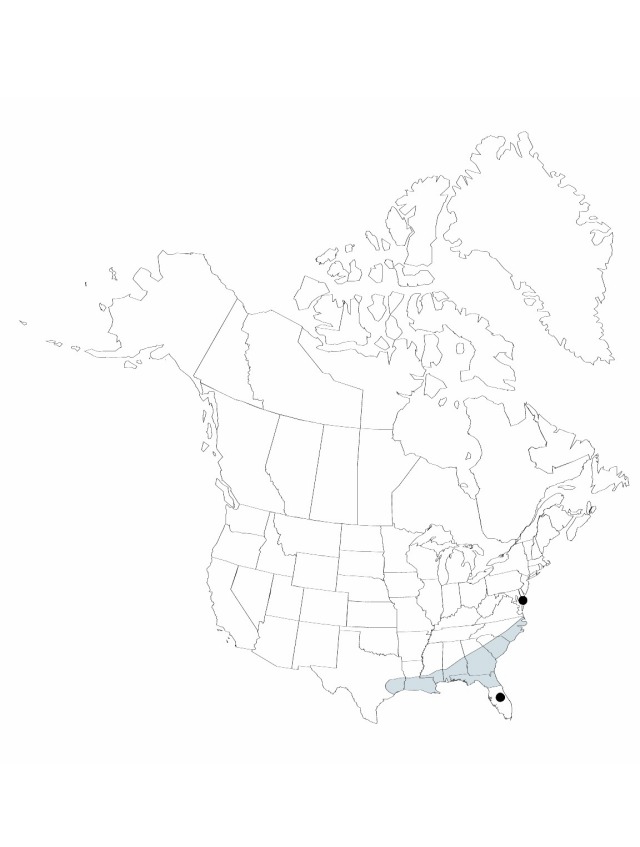Difference between revisions of "Juncus polycephalus"
Flora Boreali-Americana 1: 192. 1803 (as polycephalos).
Endemic
Synonyms: Juncus echinatus Muhlenberg Juncus engelmannii Buchenau
Treatment appears in FNA Volume 22.
FNA>Volume Importer |
imported>Volume Importer |
||
| (5 intermediate revisions by 2 users not shown) | |||
| Line 5: | Line 5: | ||
|title=Flora Boreali-Americana | |title=Flora Boreali-Americana | ||
|place=1: 192. 1803 (as polycephalos) | |place=1: 192. 1803 (as polycephalos) | ||
| + | }} | ||
| + | |special_status={{Treatment/ID/Special_status | ||
| + | |code=E | ||
| + | |label=Endemic | ||
}} | }} | ||
|basionyms= | |basionyms= | ||
| Line 10: | Line 14: | ||
|name=Juncus echinatus | |name=Juncus echinatus | ||
|authority=Muhlenberg | |authority=Muhlenberg | ||
| + | |rank=species | ||
}} {{Treatment/ID/Synonym | }} {{Treatment/ID/Synonym | ||
|name=Juncus engelmannii | |name=Juncus engelmannii | ||
|authority=Buchenau | |authority=Buchenau | ||
| + | |rank=species | ||
}} | }} | ||
|hierarchy=Juncaceae;Juncus;Juncus subg. Ensifolii;Juncus polycephalus | |hierarchy=Juncaceae;Juncus;Juncus subg. Ensifolii;Juncus polycephalus | ||
| Line 36: | Line 42: | ||
-->{{#Taxon: | -->{{#Taxon: | ||
name=Juncus polycephalus | name=Juncus polycephalus | ||
| − | |||
|authority=Michaux | |authority=Michaux | ||
|rank=species | |rank=species | ||
| Line 50: | Line 55: | ||
|publication title=Flora Boreali-Americana | |publication title=Flora Boreali-Americana | ||
|publication year= | |publication year= | ||
| − | |special status= | + | |special status=Endemic |
| − | |source xml=https:// | + | |source xml=https://bitbucket.org/aafc-mbb/fna-data-curation/src/2e0870ddd59836b60bcf96646a41e87ea5a5943a/coarse_grained_fna_xml/V22/V22_513.xml |
|genus=Juncus | |genus=Juncus | ||
|subgenus=Juncus subg. Ensifolii | |subgenus=Juncus subg. Ensifolii | ||
Latest revision as of 20:31, 5 November 2020
Herbs, perennial, cespitose, 6–10 dm. Culms erect, 3–14 mm diam. Cataphylls absent. Leaves: basal 2–3(–6), cauline 1–4, brownish green; auricles absent; blade 8–70 cm × 4–8 mm. Inflorescences panicles of 16–82 heads, 10–30 cm; primary bract erect; heads 20–30-flowered, spheric, 8–12 mm diam. Flowers: tepals green to reddish, lance-subulate, 3–4 mm, nearly equal, apex acuminate; stamens 3, anthers 1/3–1/2 length of filaments. Capsules exserted, straw-colored, 1-locular, narrowly ovoid, 4–5 mm, apex tapering to beak, remaining after dehiscence. Seeds lance-ellipsoid, 0.5–0.6 mm, not tailed.
Phenology: Fruiting spring–fall.
Habitat: Wet or seasonally wet shores, depressions, occasionally in fairly deep water of streams, usually with a peaty or mucky substrate, occasionally sandy to gravelly
Elevation: 0–100 m
Distribution

Ala., Fla., Ga., La., Md., Miss., N.C., S.C., Tex.
Discussion
Selected References
None.
Lower Taxa
None.